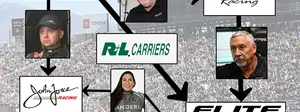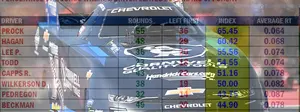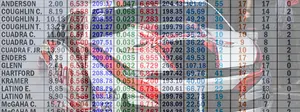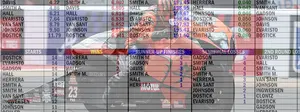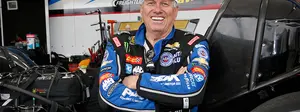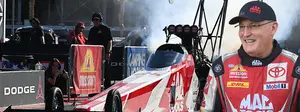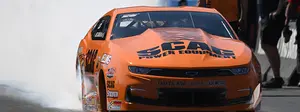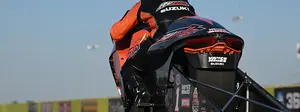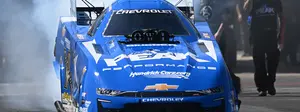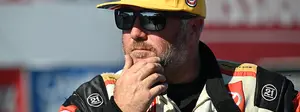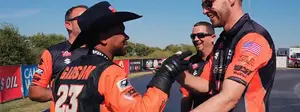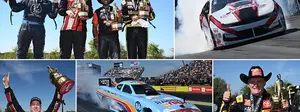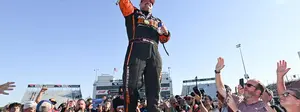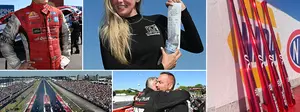

Kenny Bernstein’s shattering of the 300-mph barrier at the 1992 Gatornationals is the event’s signature moment
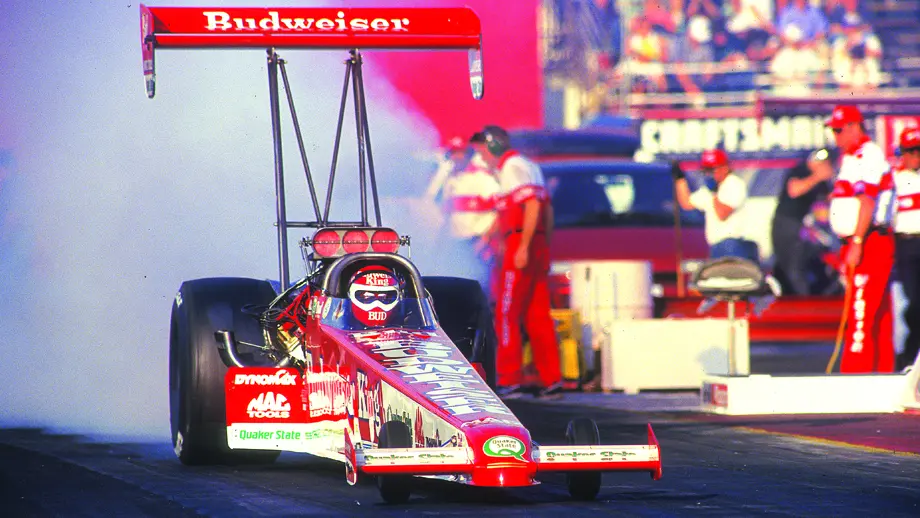
Before the start of the 1992 season, NHRA National Dragster polled 1991’s top 10 Top Fuel finishers on the only topic anyone cared about: Would someone break the 300-mph barrier that season? Darrell Gwynn said, “It would surprise me if it happened this year.” Kenny Bernstein waffled. Joe Amato was cautiously optimistic. Only Cory McClenathan, 29 at the time, gave a definitive yes.
There was plenty of reason for skepticism and doubt. The fastest speed of 1991 was just 293.15 mph, down from the 296-mph best that Gary Ormsby had registered in late 1990, so it’s understandable that few expected such a climb in speed so quickly.
Don Prudhomme, who made that 293-mph pass in 1991, steadfastly proclaimed, “No one’s going to run 300 miles an hour.”
Three months later, at 4:44 p.m. Eastern time on March 20, the answer came on a resounding pass by Bernstein during qualifying at the Gatornationals, where he and crew chief Dale Armstrong not only broke the 300-mph barrier but shattered it with a pass of 301.70 mph, breaking the last great barrier in Top Fuel racing and cementing Bernstein’s legacy as “King of Speed” in the process. But Bernstein and Armstrong didn’t do it alone.

The Buildup
“I’ve always been one of those people who felt that a dragster can run 10 mph faster than a Funny Car,” Armstrong said. “When [Roland Leong] started running 290 mph in his Funny Car last year, I felt that combination in a dragster should be capable of going more than 10 mph faster, and easily capable of going 300 mph.”
But adding Wes Cerny’s parts from Leong’s Hawaiian Punch flopper, including a new pair of Dart cylinder heads specially massaged by Steve Sanchez at Total Flow Products that increased the amount of fuel they could burn, didn’t provide the immediate keys to the kingdom.
“It wasn’t a matter of just add Wes’ parts,” Armstrong revealed later. “We had to find out how the fuel curve changed and how to keep the cylinders lit. It was a struggle.”
The struggle was real, as the Budweiser King could run no faster than 289 mph at the season’s first two events. By their third event, the Slick 50 Nationals in Houston, they were getting close.
Houston, We Have Ignition
The Top Fuel class of 1992 entered the season skeptical that a 300-mph run was possible, but the annual Houston race opened everyone’s eyes as “records fell like rain,” according to National Dragster. Pat Austin, in his first full year of Top Fuel competition after a hall of fame Top Alcohol Funny Car career, set the official national record (295.27), but Mike Dunn made the fastest speed of all time with a 297.12-mph burst.
Bernstein completed the two quickest runs of all time (4.84, 4.85) and ran a 296.93 in a winning effort over McClenathan in the semifinals. The Top Fuel field closed in on 300 mph at one of the quickest tracks in the country.
Armstrong predicted after he left the Houston race that if he worked out his ignition problems, Gainesville just might be the site of the first 300-mph run. He and Cerny toiled hard between races, altering the insides of the magnetos to raise their power without burning up the points.
The Run
Bernstein didn’t know what he had right when he hit the gas that Friday afternoon at Gainesville Raceway. His fastest run up to that point was a 291.26, recorded during qualifying on Thursday. The fastest time of the meet (and the track speed record) was held by Austin — a 292.39-mph burst.
“To make that run, the conditions had to be perfect, and everything had to be right on the race car. The car left good and was running hard in the middle of the track, but the engine got a little sour right in the lights,” said Bernstein. “Normally, I would have lifted, but I told myself to drive it all the way out the back door because it might be the run. I didn’t care if it dropped cylinders or not.”
Bernstein hit 250.41 mph at half-track. No one came close during that session. A 244.26 by Mike Dunn looks respectable in hindsight, but Bernstein and Armstrong were the only two with the recipe to make it happen. The King of Speed did not have the quickest car to 60 feet, nor to 330 feet, but Armstrong ran the dragster hard as hell over the final half of the track to make it happen.

That represents a departure from how many crew chiefs approach modern Top Fuel racing. Compare the speed at 660 feet of Bernstein to the speed at the same mark of the current Top Fuel speed record holder, Tony Schumacher. Schumacher went 336.57 mph in 1,000 feet (not 1,320 feet as Bernstein did), which totally changes the way crew chiefs attack the track.
How? Dragsters are run harder than ever. Check out the half-track speed of Schumacher’s record run: 296.31 mph. Yes, 25 years passed between Bernstein and Schumacher’s blasts, but the winningest driver in Top Fuel history nearly broke The Bernstein Barrier before making it halfway down the damn track. That’s absolutely incredible.
Especially when considering how (relatively) little some of the other margins have changed. Schumacher got to 60 feet in .829-second compared to .902 from Bernstein. His 60-330 foot incremental picked up .08-second. Yes, that’s more than enough to win a drag race, but compared to a staggering 40 mph at the 660-foot clock … well, it just doesn’t raise the eyebrows quite as high.
Strong Armed
Perhaps as amazing? Armstrong didn’t know it happened until Gainesville Raceway told him.
“It left hard and had the front end up nine or 10 inches, but it was going straight as a stick. I knew it was going to be a good run,” said Armstrong. “When the 4.82 came up, I said, ‘Yeah!’ and turned and started walking back to the van. I’d only gone a step or two before I heard this big roar, and I wondered what had happened. Then it hit me that this might have been 300. I was scared to turn around and look at the scoreboard again. But I turned around, and there it was: 301. The whole place went crazy.”
He told the Gainesville Sun in 2012 he was scared to look at the scoreboard a second time after taking note of the strong elapsed time. Then it was off to the top end to pick up the newly crowned King of Speed, who Armstrong said was walking in circles repeating, “I can’t believe it.”

Neither could anyone else.
“To accomplish this feat took a real team effort,” Bernstein told National Dragster at the time. “I have a crew chief, Armstrong, who has been with me for 10 years and has directed our team to four NHRA Winston Funny Car championships. At the end of last year, we hired Cerny, the crew chief who put the first Funny Car through the 290-mph barrier. Without the ability of those two and the other guys on our team who work so hard every week, I wouldn’t be in this position.”
That brain trust, two people at the forefront of the speed movement, helped create the most memorable moment to ever grace Gainesville Raceway.
The Future of Speed
Bernstein proved his first 300-mph burst was no fluke. He went 300.40 in Englishtown in July and followed that up with a 301.20 blast at the U.S. Nationals in September. It took three years to fill the Slick 50 300-mph Club, a prestigious group of 16 racers who all received checks for becoming the first to hit 300 in a Top Fueler.
Doug Herbert and Prudhomme became the second and third in the Slick 50 brigade, running 301.60 apiece in Pomona and Houston, respectively. They did so within a year of Bernstein’s run being heard around the automotive world. Scott Kalitta, Pat Austin, and Joe Amato all joined shortly thereafter, but no name topped Bernstein.
The King of Speed ran the top speed, a staggering 314.46, at the finals in 1994. He held that record until 1996 and would recapture it one more time in his historic career when he went 332.18 in Reading. Bernstein returned to Gainesville Raceway, the left lane of which bears his name, to take care of some Unfinished Business in honor of the 50th Amalie Motor Oil NHRA Gatornationals.
Bernstein fell to Joe Amato, who he faced 41 times in official NHRA competition, in the first round of the all-Camry battle. That moves their head-to-head record to 24-18 in “Joe Cool’s” favor – but more importantly, it gave the Gainesville faithful yet another memorable moment they’ll cherish forvevor.























